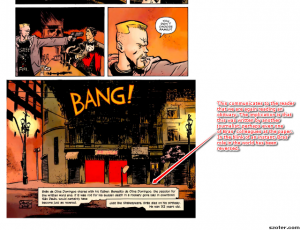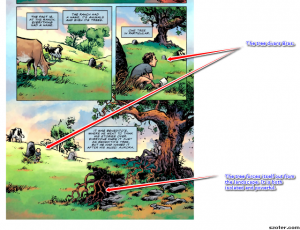Recent years of rapid technological development demonstrate increasing societal dependence on technology. Devices and programs are being invented one after the other that alter our perception of the world around us and augment our ability to communicate with one another. Google Glasses overlay technology onto the world around us and improve our ability to interact with the world around us. Applications on our mobile devices allow us to perform tasks on-the-go formerly thought to be impossible. In this way, man and machine seem to be becoming one. As social integration and access to such technology becomes more popular, we may be simultaneously losing the power to remain independent of technology. This dependence on technology is not completely grounded in necessity, either; while we do use it to store the information integral to running our infrastructures, we also have come to rely on it to live socially amongst each other. The amount of data being generated about and shared with millions of users on the internet’s social media networks is endless. Facebook generates about 500 terabytes of data on its users each day, none of which is essential for our existence or survival. Yet, people have turned to social networks because it is a very accessible, easy, and instantly-gratifying method of finding old and new friends and sharing your life with them (without going through the work of actually doing so physically). This social dynamic begs the question: What is the next stage in merging sociality and technology?
Rick Moss’s Ebocloud is an immersive science fiction novel that depicts a near-future in which a new social network entitled “Ebocloud” has become a huge social construct in daily life. This network groups its millions of users into separate families (based on their personalities and preferences) and utilizes a data cloud that acts as a server for sharing information between the members. The cloud connects to their minds and bodies via digital tattoos and stores thoughts, ideas, and experiences within the cloud. These tattoos, among other things, have the ability to control hormonal balances within a person, allowing for neurological rewards for doing certain tasks and good deeds within your Ebocloud family. Clearly, Ebocloud is an example of system that is almost 100% integrated into the daily lives of mankind. The cloud “families” you are placed in group you with those who are similar to you, allowing facilitated communication of thoughts and ideas. This type of system has major drawbacks alongside its supposed benefits. While it does help you meet new like-minded individuals while simultaneously accomplishing volunteerism/positive karma/social helping (via the kar-merit system, in which those who do “good” things are rewarded with more influence and power in Ebocloud), the negatives may outweigh these benefits. Not only are you essentially forfeiting all of your privacy to those in control and maintenance of the cloud, but you are slowly and surely losing your individuality by separating into a cloud. Families can be seen as separate homogenates of certain individuals who, after a certain amount of time, may fail to contribute new ideas and content to their families and simply perpetuate the same shared ideas instead (after all, there is no privacy among families, and everyone is working towards the goal of attaining kar-merits). Most importantly, however, the biggest danger in using such a system is the biological component of this network. Without the tattoos, this network is relatively harmless. However, allowing a vast system beyond your personal control to directly influence the inner processes of your body (i.e. hormonal balances) is a dangerous, terrifying idea. You are forfeiting your control over your body – it is as if you are giving a set of strangers the green light to drug you whenever they desire. There is also no escape from participation, as the tattoos are permanent. To engage in such a network is to have complete faith that the system is and will forever remain free of corruption, which is a dangerously naïve mistake. The plot of the novel goes on to show a scenario in which the controlling few of the cloud fall into the throes of corruption, putting the protagonists into a dangerous, compromising situation. This not-too-distant hypothetical raises some interesting questions about our real lives. When will we draw the line between technology and privacy? Is it likely that we will ever settle for a certain level of technological development, or will we continue to integrate it into our daily lives? Also, how will increased reliance on technology shape the way we interact with each other and live our lives? How much is too much?








